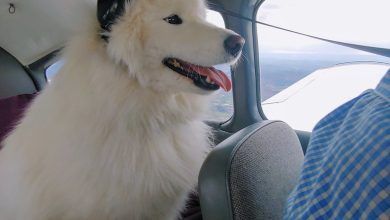Can Dogs Be Gay: Lesbian:Bisexual?
Understanding Canine Sexual Behavior
Canine sexual behavior is a fascinating and intricate subject that is currently poorly understood. One of the most contentious issues concerning canine sexuality is whether dogs can be gay, lesbian, or bisexual.
While some people believe that canine sexual orientation is a real phenomenon, others argue that it is simply a reflection of human biases and interpretations of canine behavior.
In this article, we will explore the science behind canine sexual behavior and examine the debate surrounding canine sexual orientation. We will also discuss some common misconceptions about this topic and provide guidance on how to accept and support your dog’s sexual identity.
Understanding Canine Sexual Behavior
To understand whether or not dogs can be gay, lesbian, or bisexual, it’s important to first understand how canine sexual behavior works. Dogs, like many other animals, engage in a variety of sexual behaviors, including mounting, humping, and genital licking. These behaviors are driven by a complex interplay of hormones, pheromones, and social cues.
In general, male dogs are more likely to exhibit mounting and humping behaviors than female dogs. However, female dogs can also exhibit these behaviors, and they may do so with other female dogs or even with inanimate objects. This has led some people to speculate that female dogs can be lesbian or bisexual, although there is no scientific evidence to support this claim.
Canine Sexual Orientation: A Controversial Topic
The idea that dogs can have sexual orientations is a controversial one, with opinions on the topic varying widely among experts and laypeople alike. Some people argue that dogs, like humans, can be gay, lesbian, or bisexual, while others believe that canine sexual behavior is driven solely by instinct and is not influenced by sexual preference.
One of the challenges in studying canine sexual orientation is that it is difficult to determine whether or not dogs experience attraction to specific individuals of the same or opposite sex. While some dogs may engage in same-sex sexual behaviors, it is unclear whether these behaviors are driven by sexual attraction or simply a response to hormonal or social cues.

The Science Behind Canine Sexual Orientation
Despite the controversy surrounding canine sexual orientation, there is some scientific evidence to suggest that dogs may be capable of experiencing same-sex attraction.
For example, a study published in the journal Animal Behaviour found that male dogs were more likely to exhibit mounting behaviors with other male dogs if they had been neutered at a young age.
Other studies have shown that dogs may be capable of forming strong social bonds with other dogs of the same sex, and that these bonds may be based on more than just social dominance or reproductive status. However, much more research is needed to fully understand the nature of canine sexual orientation.
Factors That Can Influence a Dog’s Sexual Preferences
There are a number of factors that may influence a dog’s sexual preferences, including genetics, early life experiences, and socialization. For example, some researchers believe that exposure to certain hormones in the womb or early in life may influence a dog’s sexual orientation later on.
Additionally, socialization and early experiences may also play a role in shaping a dog’s sexual preferences. Dogs who are raised in same-sex households, for example, may be more likely to form same-sex social bonds later in life.

Common Misconceptions About Canine Sexual Orientation
There are many misconceptions about canine sexual orientation, and it’s important to separate fact from fiction. One common misconception is that dogs engage in same-sex sexual behaviors solely for dominance or reproductive purposes.
While these factors may play a role in some cases, they do not fully explain all instances of same-sex sexual behavior in dogs.
Another misconception is that dogs can be “turned gay” through exposure to certain environments or experiences. However, there is no scientific
While dogs can exhibit sexual behavior towards the same sex, it doesn’t necessarily mean that they are gay, lesbian, or bisexual.
So, to answer the question, can dogs be gay, lesbian, or bisexual? The answer is a bit more complicated than a simple yes or no.
Here are some key points to consider:
- Sexual behavior does not equal sexual orientation
- As mentioned earlier, dogs can engage in sexual behavior towards both males and females, but it doesn’t necessarily mean they have a sexual preference for one over the other.
- Sexual orientation is a human concept
- The concept of sexual orientation is a human construct, and it’s not something that can be applied to animals in the same way. While animals can certainly display sexual behavior, they don’t necessarily have a sexual identity or orientation in the same way that humans do.
- Dogs can form strong bonds with other dogs
- It’s not uncommon for dogs of the same sex to form strong bonds with each other, and this can sometimes be misconstrued as sexual behavior. However, these bonds are typically based on social and emotional connections rather than sexual attraction.
- Dogs don’t have the same societal pressures as humans
- Unlike humans, dogs don’t have societal pressures or expectations around their sexual behavior. They don’t have to worry about being accepted or judged by their peers, which means that their behavior is not influenced by the same factors as human sexual behavior.
In conclusion, while dogs can engage in sexual behavior towards both males and females, it’s not accurate to apply human concepts of sexual orientation to animals. Dogs are simply engaging in natural behaviors, and it’s important for pet owners to understand and accept their dog’s behavior without applying human labels to it.





